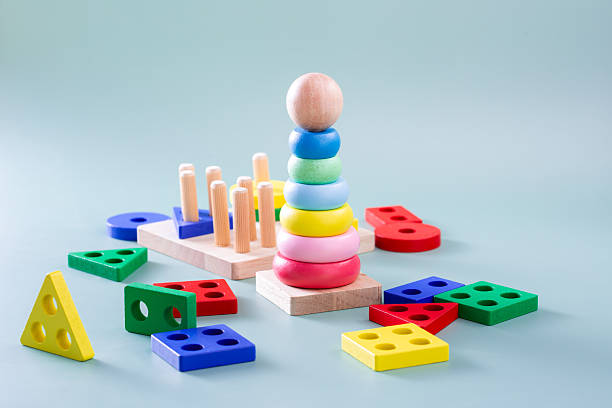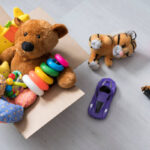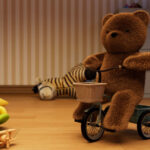Beyond the Playground: The Overlooked Power of Children’s Balance Toys
Simple toys like balance toys can be easily overlooked in everyday life, but these seemingly simple structures. Whether it’s a beam, a plank or a stepping stone, they are powerful tools for sensory development, physical coordination and even emotional regulation. In a world filled with digital learning tools and screen games, it is more important than ever to foster physical activity in children. Balance is a vital yet often overlooked skill. It is a complex ability that supports physical, cognitive and even emotional development.
Children’s balance toys, such as balance boards, beams, and stepping stones, offer a fun and engaging way to develop this skill. Not only do these tools promote physical coordination, they also enhance cognitive function and support neurodiverse children, such as those with autism or ADHD. Explore the world of balance toys and learn about their benefits, the science behind them, safety considerations, and some practical tips to help parents and others get the most out of balance toys.
Why Do Balance Toys Deserve A Place In Every Child’s Play?
Balance toys are toys specifically designed to challenge and improve children’s ability to maintain stability during moving or stationary tasks. They come in a variety of forms, from wooden balance boards to inflatable rocking chairs, and balance toys support much more than physical strength. These tools provide a comprehensive movement experience that stimulates the vestibular and proprioceptive systems, which are essential for posture, spatial awareness, and body coordination.
Balance Toys – A Secret Weapon For Children’s Development
A 2019 study published in the Journal of Physical Education and Health found that preschoolers who regularly engaged in balance-related activities had significantly higher fine motor skills, attention, and social interaction abilities than their peers. This makes children’s balance tools an invisible catalyst for broader cognitive and behavioral development.
In addition, occupational therapists often incorporate balance toys into sensory integration classes to help children with motor delays or poor attention regulation.
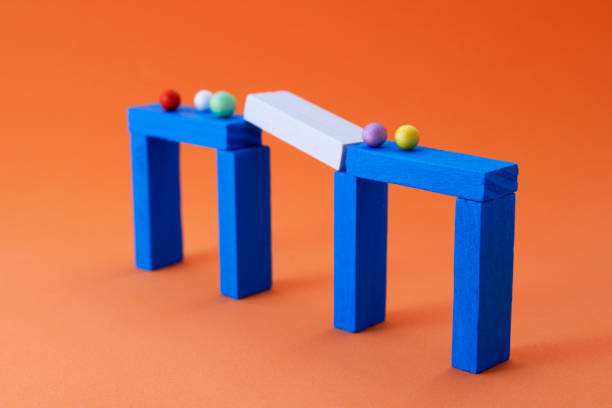
The Multiple Benefits of Balance Toys: How They Help Kids
Balance toys have a wide range of benefits that contribute to a child’s overall development. These benefits span physical, cognitive, and emotional areas, making them a versatile addition to any playroom.
Physical Development
Balance toys significantly enhance physical skills critical for daily activities and sports:
- Motor Skills: Engaging with balance toys improves both gross motor skills and fine motor skills. For example, navigating stepping stones strengthens leg muscles, while stacking toys can refine hand-eye coordination.
- Coordination: Maintaining stability on a balance board or beam enhances hand-eye and body coordination, essential for activities like sports and dance.
- Strength: These toys engage core muscles, vital for posture and overall physical strength. A strong core reduces fatigue and supports other movements (Poppyseed Play).
- Flexibility: Activities like stretching to maintain balance on a wobble cushion can improve a child’s flexibility, aiding in physical agility.
Balance toys require multi-muscle coordination. Whether balancing on a beam or teetering on a curved board, kids learn to stabilize their core muscles while making fine adjustments to their limbs—skills that are essential for everyday activities like walking, dressing, or writing.
Cognitive Development
Beyond physical benefits, balance toys stimulate cognitive growth:
- Problem-Solving: Figuring out how to balance or navigate a course encourages critical thinking. For instance, arranging stepping stones in different patterns fosters strategic planning (Poppyseed Play).
- Focus and Concentration: Maintaining balance requires sustained attention, which can translate to better focus in academic settings. Research suggests open-ended balance toys can extend attention spans, particularly for children with ADHD (Poppyseed Play).
- Spatial Awareness: Balance toys help children understand their body’s position in space, a skill crucial for activities requiring spatial navigation (Kid Sense).
Support for Neurodiverse Children
Balance toys can be particularly beneficial for neurodiverse children, including those with autism spectrum disorder (ASD) or attention deficit hyperactivity disorder (ADHD):
- Autism Spectrum Disorder (ASD): Children with ASD often face postural control challenges due to impaired somatosensory perception. A study involving 28 children with ASD (average age 8 years) found that a three-month balance training program reduced the surface of the confidence ellipse by 92% and the curve length by 42%, indicating significant improvements in postural stability. Balance toys like stepping stones or wobble cushions can replicate these exercises in a playful setting.
- Attention Deficit Hyperactivity Disorder (ADHD): The physical exertion and focus required by balance toys can serve as a positive outlet for children with ADHD, potentially improving attention and reducing hyperactivity. The engaging nature of these toys makes them ideal for channeling energy constructively (Poppyseed Play).
Children with ADHD are often restless and have difficulty focusing. Simple balance exercises can provide structured physical activity, help burn off excess energy, and refocus attention.
Emotional and Social Benefits
Balance toys also foster emotional and social growth:
- Confidence: Mastering balance challenges boosts self-esteem and encourages children to take on new physical activities.
- Social Interaction: Group activities with balance toys, such as creating obstacle courses, promote teamwork and social bonding, which is particularly valuable for children with ASD who may struggle with peer interactions (Kid Sense).
Balance play can stimulate sensory input. Rocking, spinning, and bouncing can have a calming effect on some children, especially those with differences in sensory processing abilities. This makes balance toys an ideal component of sensory training toys for children and sports toys that stimulate the development of active bouncing and rolling skills.
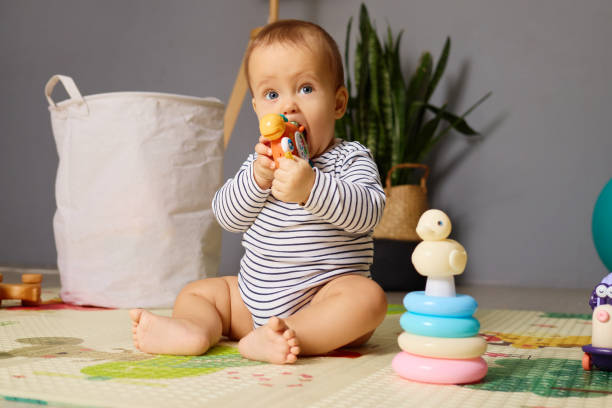
The Science Behind It: A Deeper Look at Balance Toys
Scientific research has proven the effectiveness of balance training, and balance toys are a powerful tool. Key findings and highlights from the research show that balance training with toys can significantly improve static and dynamic balance abilities, especially in neurodiverse children. However, more longitudinal research is needed to fully understand its long-term effects, especially for autism spectrum disorder (ASD).
| Study | Key Findings | Source |
|---|---|---|
| Balance Training in Youth | A 7-week balance training program improved static (one-legged stance) and proactive (Y-Balance Test, Functional Reach Test) balance in male adolescents, with high-difficulty training more effective for proactive balance and low-difficulty for static balance. | BMC Sports Science |
| Balance Training for ASD | A 3-month balance training program for children with ASD (average age 8 years) reduced the surface of the confidence ellipse by 92% and curve length by 42%, indicating enhanced postural control. | PMC Study |
| Balance During Lockdowns | A short-term balance training program improved static balance in preschoolers, mitigating negative effects of reduced physical activity during COVID-19 lockdowns. | PMC Study |
Everyone Is Worried About: Are Balance Toys Safe?
Safety is a universal concern, and there is no doubt about that. Balance toys are generally safe when used correctly. But to minimize the risks, the best balance toys for children should prioritize the following precautions:
- Use under supervision: This is especially important for children under 3 years old or those with motor development delays. Always supervise young children to prevent falls. Guardians can hold their children’s hands to help them build confidence.
- Age-appropriate height and width: Avoid overly challenging young children.
- Safe environment: Use balance toys in an open area without hazards such as sharp objects or furniture edges. Soft surfaces such as carpets can slow down the balance board and make it easier to use.
- Safety equipment: For activities with a higher risk of falls, consider wearing a helmet or knee pads, especially for children with poor coordination. Always check its certification (such as ASTM or EN71 standards) and make sure the wood material is coated with a child-safe coating.
- Toy design: Choose toys with safety features, such as non-slip surfaces or non-toxic materials. For example, some balance boards have felt bottoms for added stability. Textured or non-slip surfaces can reduce the risk of slips.
Children with weak ankles, knee problems, or limited balance may be at a higher risk of falling, so it is recommended to consult a physical therapist for specific guidance on how to prevent falls and serious falls.
Are Today’s Best Balance Toys Suitable For Children With Autism?
Absolutely. In fact, many of the top balance toys for kids are designed with neurodiverse users in mind, especially children with autism. Features like sensory stepping stones or soft-touch surfaces can address sensory processing needs (fun vs. practical). Research shows that balance training can improve motor skills and reduce anxiety in children with autism, although there is currently no evidence that it can reduce core symptoms such as social difficulties. Parents should choose toys that match their child’s sensory preferences and consult an occupational therapist for personalized advice. These toys often have the following features:
- Weighted base for firm feedback
- Colorful but not glaring
- Play alone or with others
Balance toy sets are used in both mainstream and special education classrooms. They also allow children to arrange paths to suit their own level of challenge, fostering independence and creative problem-solving skills.
Choose the Right Balance Toy – Based on Your Child’s Needs
Every child has different needs and purposes for balance toys. Here are some things to consider when choosing the right balance toy:
- Consider your child’s age and growth: Check the recommended age range. Toys like rocking boards can grow with your child, while pedals may be more appropriate for toddlers.
- Toy type: Assess your child’s interest in movement: Some children like to spin, others like to rock. Choose a toy based on your child’s interests. Treads encourage dynamic movement, while balance beams focus on precision.
- Safety features: Choose durable, non-toxic materials, such as Baltic birch plywood or toys with non-slip surfaces.
- Space requirements: Make sure there is enough room. Balance beams require more space than compact rocking pads.
- Versatility: Toys like modular balance beams can be combined in a variety of ways, making play more engaging. Products that improve as skills develop offer the best long-term value.
- Observe your child’s motor skills: Can your child stand on one foot? Do they have trouble with tasks like climbing stairs?
If you’re unsure, talk to a pediatric physical therapist or occupational therapist who can recommend the right tools for your child’s specific situation.
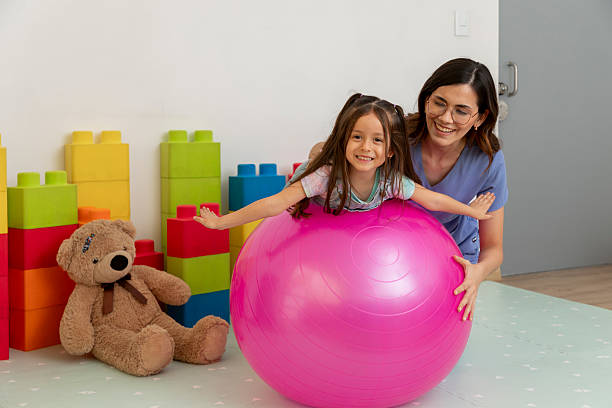
Final Tips: What to Know Practical Tips
To maximize the benefits of balance toys, start early. The earlier children engage in balance play, the better their coordination and posture will be in the long term. Consider the following strategies:
- Step by step: Start with simple tasks, such as standing on a balance board against a wall for support, and then gradually increase the difficulty.
- Encourage creativity: Let your child try out various toy arrangements, such as building an obstacle course, to foster imagination. Well-designed toys can promote development more than cheap alternatives.
- Integrate into daily life: Regular use, even for 10-15 minutes a day, can provide lasting developmental benefits (Kid Sense).
- Integrate with other activities: Combine balance toys with activities such as yoga or hopscotch to enhance coordination. Balance play can develop teamwork and empathy.
- Monitor progress: Watch for improvements in balance and coordination, observe, don’t wander and give your child room to explore their limits. Small falls can teach them profound lessons. If difficulties persist, consult an occupational therapist (Kid Sense).
Why Balanced Activities Should Be a Part of Every Day
Modern children spend more time sitting than ever before. Whether in school, in the car or using a screen, this sedentary trend can slow neuromuscular development. Balance play doesn’t need to be long or complicated – consistency is key. Just 15-20 minutes of balance toy practice each day can:
- Builds muscle memory
- Enhances stability for sports and everyday movement
- Reduces fall risk
- Improves emotional resilience through movement-based self-regulation
Suggestions for Introducing Balance Toys into Daily Routines
- Morning Energizer: Start the day with a quick wobble board session to awaken the senses.
- Homework Break: Use stepping stones or cushion walks between study intervals.
- Bedtime Wind-Down: Slow, rhythmic rocking calms the nervous system.
Balance Toys Can Really Give You More Than Just Physical Benefits
Balance toys are more than just fun – they are foundational tools for shaping your child’s motor skills, confidence, and sensory world. They are powerful tools for unlocking your child’s physical, cognitive, and emotional potential. From strengthening motor skills and coordination to helping neurodiverse children with autism or ADHD, these toys offer a fun and effective way to promote development. Scientific studies show that balance toys can improve postural control and focus, making them a valuable addition to any child’s playtime.
Whether your child is neurotypical or neurodiverse, active or introverted, the right balance toy can unlock new levels of growth and learning. By incorporating balance into everyday life, we don’t just teach children to stand tall, we help them stand tall in every way. By choosing age-appropriate, safe toys and carefully incorporating them into daily life, you can help your child develop essential skills that will benefit them for a lifetime. Embrace balance and track your child’s growth with balance toys!
Key Citations:
